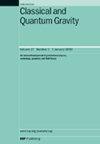使用机器学习的光学腔的自动对准
IF 3.7
3区 物理与天体物理
Q2 ASTRONOMY & ASTROPHYSICS
引用次数: 0
摘要
优化对准在光学系统中非常重要,特别是在高精度仪器中,如引力波探测器,以最大限度地提高灵敏度。在操作过程中,使用高性能的光波前传感和反馈系统来保持光学腔的性能。然而,在维护或地震等大环境干扰之后,对自动初始对准过程的需求就会增加,因为手动实现优化和一致的光学对准可能具有挑战性。在本研究中,提出了一种机器学习控制系统,以确定基于传输腔模式的数字相机流的光学腔的最佳输入光束对准。我们使用卷积神经网络从其图像中对空腔模式进行分类,对所需模式的预测精度为100%。采用遗传算法求出可使所选腔模式传输功率最大化的实验参数。在第六代算法中,系统显示了一致的对齐结果,多次试验的中位数强度超过95%。这些结果表明,机器学习技术可以实现自动化校准过程,这与广泛的光学谐振器平台兼容。本文章由计算机程序翻译,如有差异,请以英文原文为准。
Automated alignment of an optical cavity using machine learning
Optimised alignment is important in optical systems, particularly in high-precision instrumentation such as gravitational wave detectors, in order to maximise the sensitivity. During operations, high performing optical wave-front sensing and feedback systems are used to maintain optical cavity performance. However, the need for an automated initial alignment process arises after maintenance or large environmental disturbances such as earthquakes, as it can be challenging to manually achieve optimised as well as consistent optical alignments. In this study, a machine learning control system is presented to determine the optimal input beam alignment of an optical cavity based on a digital camera stream of the transmitted cavity mode. We use convolutional neural networks to classify the cavity mode from its image, with 100% prediction accuracy for the desired mode. A genetic algorithm is applied to find experimental parameters that maximise the transmitted power of a chosen cavity mode. The system demonstrates consistent alignment outcomes that the median intensity over multiple trials exceeds 95% by the sixth generation of the algorithm. These results show that machine learning techniques can be implemented to automate the alignment process that is compatible for a broad range of optical resonator platforms.
求助全文
通过发布文献求助,成功后即可免费获取论文全文。
去求助
来源期刊

Classical and Quantum Gravity
物理-天文与天体物理
CiteScore
7.00
自引率
8.60%
发文量
301
审稿时长
2-4 weeks
期刊介绍:
Classical and Quantum Gravity is an established journal for physicists, mathematicians and cosmologists in the fields of gravitation and the theory of spacetime. The journal is now the acknowledged world leader in classical relativity and all areas of quantum gravity.
 求助内容:
求助内容: 应助结果提醒方式:
应助结果提醒方式:


